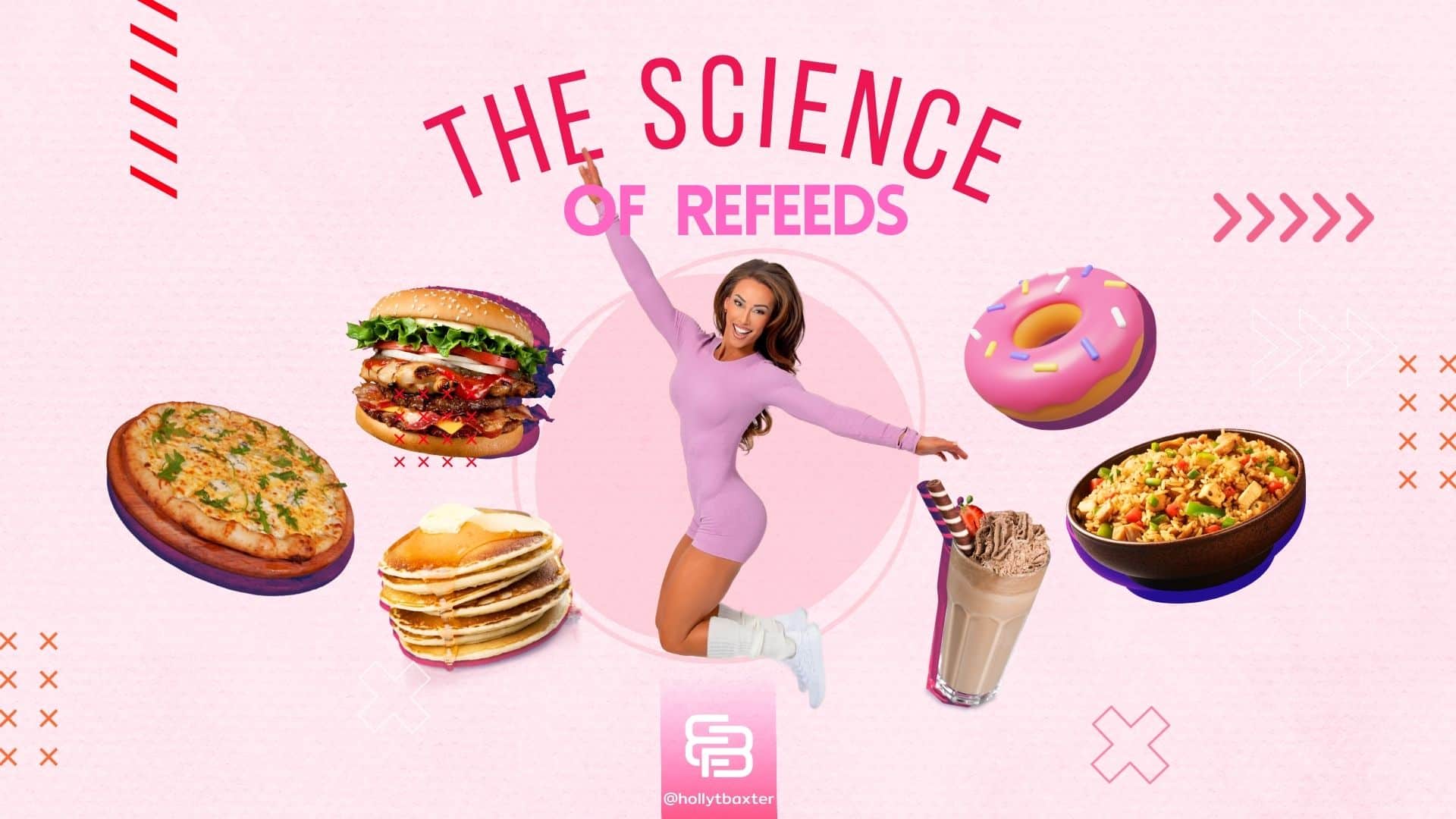This question comes up quite a bit for anyone undertaking intentional fat loss. So in this video, I’ll provide you with the nutritional science definition of a “Refeed’, along with several points you should consider when planning one.
So let’s start with a basic definition. What is a Refeed?
A “refeed” simply refers to a planned increase in calorie intake, typically focusing on an increase from carbohydrates, while keeping protein and dietary fat intake relatively stable. A refeed takes place over a relatively short period of time to temporarily reverse or mitigate the negative symptoms of prolonged dieting or caloric restriction.
Ok, so who might benefit from a Refeed?
This practice is commonly used by athletes, bodybuilders, and fitness enthusiasts to enhance their day to day and sporting performance, improve body composition, and support psychological health and well-being, but… this approach can be implemented by just about anyone who is looking to lose weight and achieve sustained weight loss, safely, and efficaciously.

So what are the key purposes of a Refeed?
The are 3 main purpose of a Refeed
- Restoration of muscle glycogen stores:
Prolonged dieting can deplete our muscle glycogen stores, which is crucial for maintaining high-intensity, high quality training sessions and our overall energy levels. A refeed which focuses on increasing calories from carbohydrate can help replenish our glycogen stores, allowing for temporary relief and improved performance.
- Preservation of lean body mass and maintaining a robust metabolism:
Unfortunately, we often see weight loss being carried out at lightning speed, and this type of crash dieting behavior comes with a number of metabolic risks, leading to an unnecessary loss of lean tissue, which includes both skeletal muscle and organ size.This is because lean tissue is a rather costly tissue in terms of its daily energy demands. When lean tissue is lost, our Basal Metabolic Rate or metabolism decreases, meaning our need for energy from food lowers. A refeed can help prevent or mitigate unnecessary lean tissue loss, by slowing down the rate of weight loss and thus maintaining their metabolic health.
- Physiological relief:
A refeed is also extremely helpful in terms of psychological relief. Strict dieting can be mentally taxing, so a refeed provides us with a healthy psychological break, allowing for more flexibility and enjoyment in eating, which can help with long-term adherence to a diet plan.
Other considerations for Refeeds:
Diet duration & Weight loss goal
The diet duration & weight loss goal are both important considerations for how frequently and how long you plan & schedule a refeed. Your starting body composition, or more specifically, your body fat percentage, is also a major consideration for implementing refeeds.
If your weight loss endeavors are relatively conservative, for example, a weight loss goal of < 5% of your total body weight would generally be considered conservative, and, if your starting body fat % is within a healthy range, then there may not be any inherent need to include Refeeds. This is because your relative metabolic risk and subjective symptoms of dieting may be quite mild.
Conversely, if your goal were to lose greater than 10% of your total body weight, and your starting body fat percentage is within a healthy range (which is 14-20% for men and 20-31% for women), then you may benefit from more frequent refeeds as a means of protecting not only your metabolic health, but to help temporarily mitigate the negative symptoms experienced while dieting.
That said, regardless of your weight loss goal and starting body composition, dieting can be quite unpleasant, both physically and mentally. Refeeds can therefore be implemented as often as you deem necessary, to alleviate the unpleasant symptoms of dieting, helping you maintain good energy levels, good day to day performance and high quality training sessions, and most importantly, healthy eating behaviors which focus on maintaining a positive relationship with food.
So how to implement a Refeed?
To set up a refeed, it is as simple as determining your current maintenance calories,the number of calories which maintains your current body weight and activity levels, which you can calculate using a maintenance calorie calculation, in fact you can learn exactly how to do this by reviewing previous videos I’ve made on this topic on Youtube.
I recommend increasing your calories for a period of 1-3 days, and as often as needed, depending on the severity of your symptoms. You might even like to increase your calories by approximately 5 to 10% above your calculated maintenance calories during that time frame, primarily focusing on increasing your calories from carbohydrate sources. A Refeed can also be helpful from a practical sense if you have a busier than normal work schedule, or you are traveling and need a little more flexibility and brain power to focus on other important priorities.
So, to summarize this video, a refeed is a strategic nutritional approach used to counteract the negative effects of prolonged dieting by supporting metabolic health, improved day to day performance, and psychological well-being. In my opinion, it is a fantastic tool anyone can use, that when used correctly, can enhance the effectiveness and safety of a fitness and nutrition plan.

Holly T. Baxter is an Australian Dietitian with over 13 years of experience in health and fitness. She holds a degree in Food Science and Nutrition and a Master of Dietetics from Deakin University. A former professional physique athlete, Holly has two World Championship titles. Her latest project, BiaBody, is dedicated to women’s health and fitness. As an APD Dietitian and Online Physique Coach, she focuses on evidence-based health education and empowering women through fitness.

